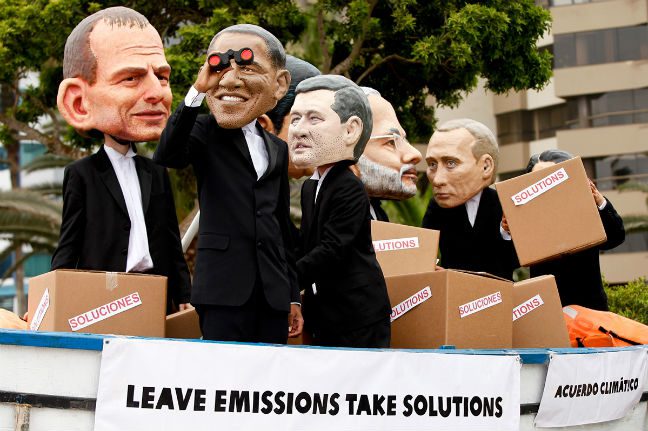
By Celine Charveriat, Advocacy and Campaigns Director, Oxfam International
After two weeks of splitting hairs over key elements of a new climate treaty at the UN climate talks here in Lima, governments failed once again to put the world on a pathway to keep global warming under control. It is sobering to think that this same process of UN climate negotiations started 20 years ago. What will it take for governments to act?
Reasons for optimism
Yet, as I am about to leave Lima, I am strangely filled with a great sense of optimism.
Last week started badly with the looming threat of another major typhoon in The Philippines, the third in four years. Thankfully, Typhoon Hagupit slowed down before it hit landfall.
Years of efforts on Disaster Risk Reduction by local communities and the government, supported by Oxfam and many others, are also starting to pay off. While tragically 650,000 families were affected and 21 people lost their lives, last year the number of people killed by Typhoon Haiyan was a massive 6,300.
Needless to say, much more needs to be done to help communities adapt in The Philippines and elsewhere – UNEP put out a report estimating the investment gap for adaptation in the developing world to be 350 billion — but The Philippines example shows that adaptation is not beyond reach.
Another highlight for me has been the fact that governments are finally committing money to the Green Climate Fund (GCF) — the $10 billion mark was reached in Lima. Oxfam and its allies have been working for years on this goal and when we started eight years ago, we were doubtful we would ever see this day. While we are far from the badly needed $100 billion which was promised in Copenhagen in 2005, we can’t underestimate what has been achieved at a time when aid for development is increasingly unpopular.
Even Australia, which is one of the biggest blockers on climate change, bowed to international pressure and committed $200 million here in Lima to the GCF. Now we have to make sure that mobilised resources are put to best use — for projects that truly cut emissions and keep people and economies safe from the devastating effects of changing climate.
Power from the Peruvians
Since I’ve been here, I’ve been both energised and humbled by the strength and resolve of the people of Peru who are at the front line of fighting against polluters and climate change. This week 15,000 people – the biggest climate march ever in Latin America — turned out and ground Lima to a halt. Indigenous peoples (facing the same threats as the Saweto community, whose leaders lost their lives to protect trees and rivers of the rainforest from illegal logging and mining), rural women from all over Central and South America defending their rights to farm their land against big agribusiness, trade unions who are demanding greener and better jobs, and thousands of others from all walks of life united in a call for climate action and for basic rights.
This march embodied what fighting against climate change is all about — a fight for the people, by the people.
On to Paris
As we are gearing up for the final year of UN negotiations on a global climate deal, civil society groups from around the world gathered here in Lima. Trade unions, environmental and development NGOs, faith groups, social movements from Africa, Asia and Latin America, all vowed to make 2015 a turning point when governments and the private sector will give in to people’s demands and have the courage to take the actions that are required to keep all of us safe from climate change.
Will you join us and be a part of making history in 2015?
